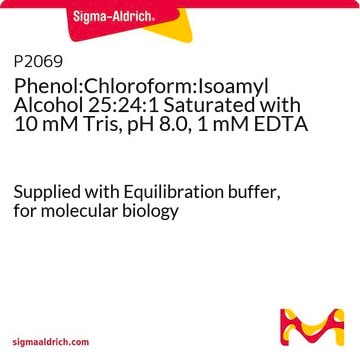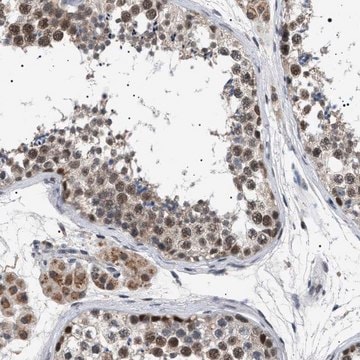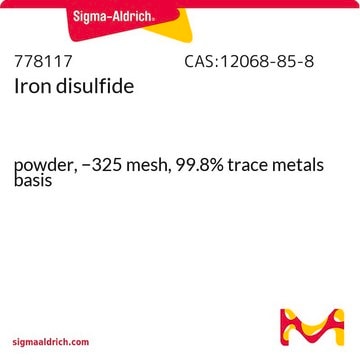15-1520
Iron(II) sulfide
SAJ first grade, ≥50.0%
Synonym(s):
Ferrous sulfide
Sign Into View Organizational & Contract Pricing
All Photos(1)
About This Item
Empirical Formula (Hill Notation):
FeS
CAS Number:
Molecular Weight:
87.91
EC Number:
MDL number:
UNSPSC Code:
12352302
PubChem Substance ID:
grade:
SAJ first grade
form:
solid
Recommended Products
grade
SAJ first grade
form
solid
reaction suitability
reagent type: catalyst
core: iron
availability
available only in Japan
concentration
≥50.0%
density
4.84 g/mL at 25 °C (lit.)
SMILES string
S=[Fe]
InChI
1S/Fe.S
InChI key
MBMLMWLHJBBADN-UHFFFAOYSA-N
Looking for similar products? Visit Product Comparison Guide
Related Categories
Storage Class Code
11 - Combustible Solids
WGK
WGK 3
Flash Point(F)
Not applicable
Flash Point(C)
Not applicable
Personal Protective Equipment
dust mask type N95 (US), Eyeshields, Gloves
Choose from one of the most recent versions:
Already Own This Product?
Find documentation for the products that you have recently purchased in the Document Library.
N Finck et al.
Environmental science & technology, 46(18), 10004-10011 (2012-08-21)
The isotope (79)Se may be of great concern with regard to the safe disposal of nuclear wastes in deep geological repositories due to its long half-life and potential mobility in the geosphere. The Se mobility is controlled by the oxidation
Andrew D Henderson et al.
Water research, 47(3), 1267-1276 (2012-12-19)
Iron sulfide (FeS) has been extensively assessed as a reactive medium to remove both metals and halogenated organics from groundwater. However, to address its suitability as a material for permeable reactive barriers (PRBs), its propensity for solids and gas production
The structural plasticity of the proximal [4Fe3S] cluster is responsible for the O2 tolerance of membrane-bound [NiFe] hydrogenases.
Jean-Marie Mouesca et al.
Angewandte Chemie (International ed. in English), 52(7), 2002-2006 (2013-01-09)
Wei Wang et al.
Astrobiology, 11(5), 471-476 (2011-06-29)
The iron-sulfur world (ISW) theory is an intriguing prediction regarding the origin of life on early Earth. It hypothesizes that life arose as a geochemical process from inorganic starting materials on the surface of sulfide minerals in the vicinity of
David P Summers et al.
Astrobiology, 12(2), 107-114 (2012-01-31)
Understanding the abiotic fixation of nitrogen and how such fixation can be a supply of prebiotic nitrogen is critical for understanding both the planetary evolution of, and the potential origin of life on, terrestrial planets. As nitrogen is a biochemically
Our team of scientists has experience in all areas of research including Life Science, Material Science, Chemical Synthesis, Chromatography, Analytical and many others.
Contact Technical Service






